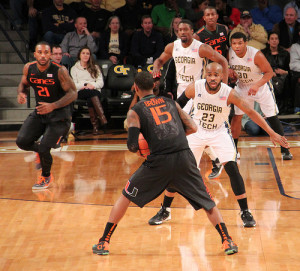Teaching a Chest Pass

The Chest Pass forms one of the most utilised skills in basketball. For many players a chest pass will be one of the first skills they practice (even if they do not know what a chest pass is). Passing can have many different variations of the skill. However the chest and overhead pass tend to be the most readily used initially by new players especially because they care common skills associated with a wide range of different sports and activities.
For senior players the chest pass often features as the technique of choice when passing over long distances or when a pass needs to be made at top speed. This is because the chest pass allows for more significant muscle groups to be involved in the action and therefore power can be generated in greater quantities more readily. This explanation can be seen during most fast break or offensive transition situations, where the chest pass is mostly the only pass utilised when running and passing at short and long distances because of the extra control or power it offers by having two hands on the ball.
To start teaching a chest pass with younger players it might be as simple as asking initially for players to pass backwards and forwards to one another and to coach the technique while moving around the group. As stated earlier because of the common use of the technique across a number of different activities and sports players often are able to perform the skill with very little time for explanation.
For markedly newer participants to the sport of basketball, or to refine technique the following teaching points might be of use in perfecting the desired technique.
Pass out of a Triple Threat Stance: A really good starting point is to always have players practice any individual offensive technique from the starting point of a Triple Threat Stance. This will help as it develops a good habit from the moment players start to have a ball in their hands.
Two Hands on the Ball: Two hands should be on the ball. One on each side with palms facing one another when holding the ball. The hands will wrap around the ball so the thumbs be pointing towards each other on the back of the ball.
Head Up: Players will have a natural tendency to look at the ground. Instruct players to keep their head up and nose pointing towards the target at all times. For senior players this seems like a nothing teaching point, but how many times in a game do you see players make terrible passes because they take their eyes off of the target.
Elbows Tucked In: Players initially often start to “flap” their arms about when first practicing the chest pass. This robs a player control and power. By tucking the arms in the force generated is directed through the line of the ball towards the intended target.
Step Towards the Intended Target: Initially the power is started from the legs. A player should look to step towards the target. This help to again direct the force generated with the most amount of accuracy.
Push Through the Ball: As the step is start the arms also start to extend towards the intended target. The arms should push through the line of the ball until fully extended and point directly towards the chest of the intended reciever. A common problem seen in this aspect is a player (often senior) will become lazy and start to favour one hand (dominant) over the other. When performing the pass this arm will sometimes not point at the target, but instead point to a variety of different spots. If this happens more control needs to be incorporated into the player’s technique so consistency is increased.
Twisting of Wrists: As the arms extend the wrists will twist inwards and the palms rotate to facing towards the floor. This will assist in imparting some backspin on the ball so in the act of catching the ball the receiver will feel the ball dig into their hands making for a better catching opportunity. As the palms rotate so too will the thumbs of both hands until they are pointing down to the ground as well.
Toes, Nose and Fingers: In correcting the technique of players, one very simple, yet invaluable feedback point is Toes, Nose and Fingers must all be pointing towards the target.
The chest pass is a highly utilised skill so spending time initially to learn and refine the basics is important. Nevertheless, always remember, once the initial skill is understood and refined move into game like situations as quickly as possible.

